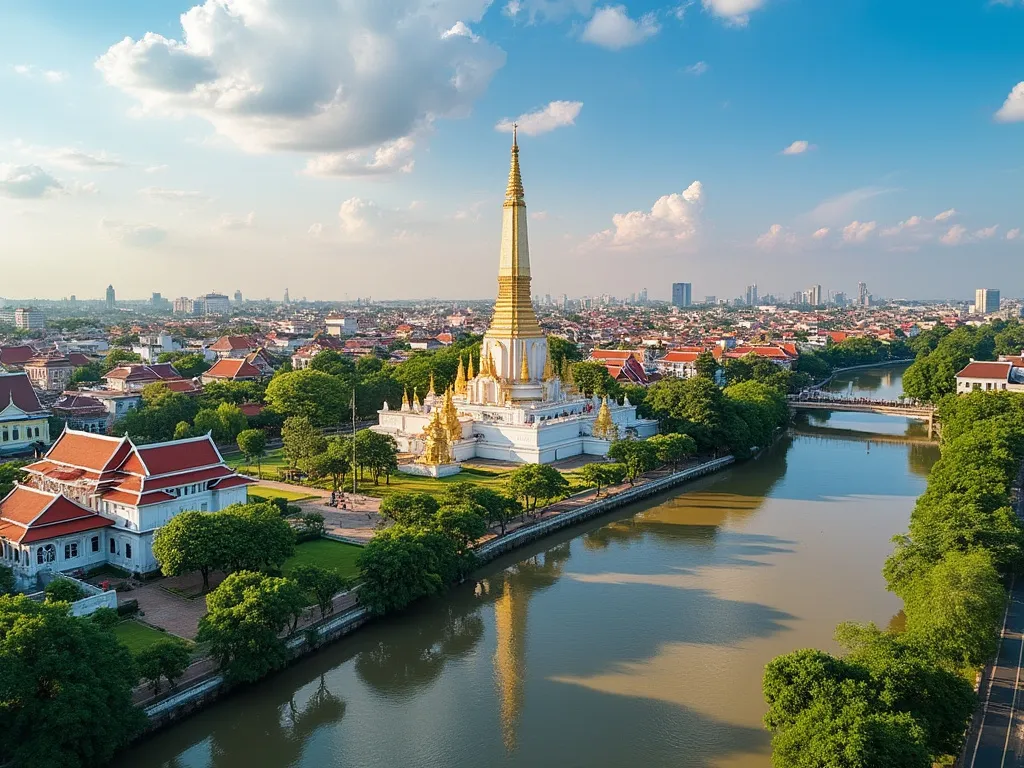
Varsovia, la capital y ciudad más grande de Polonia, tiene una rica y tumultuosa historia que abarca más de 700 años. Fundada en el siglo XIII, Varsovia ha sido un importante centro cultural, económico y político en Europa del Este.
Información sobre Varsovia
| País | 🇵🇱 Polonia |
| Población | 1.764 millones (área urbana: 3.1 millones) |
| Coordenadas | 52°13′N 21°02′E |
| Área | 516.9 km² (199.6 sq mi) |
| Clima | Continental húmedo (clasificación climática de Köppen: Dfb) |
| Idioma | Polaco |
| Moneda | Złoty polaco (PLN) |
| Zona horaria | Hora Central Europea (CET) |
| Proximidad a otras ciudades importantes | Berlín (570 km/354 mi), Praga (520 km/323 mi), Viena (460 km/286 mi) |
Datos interesantes sobre Varsovia
- Varsovia alberga el zoológico más antiguo de Polonia, el Zoológico de Varsovia, fundado en 1928.
- La ciudad tiene una red de túneles y búnkeres subterráneos, conocida como el "Subterráneo de Varsovia", que data del siglo XIX.
- Varsovia es hogar del edificio más alto de Polonia, el Warsaw Spire, que tiene una altura de 220 metros (722 pies).
Atracciones turísticas en Varsovia
- Casco Antiguo (Stare Miasto)
- Museo del Levantamiento de Varsovia
- Museo Nacional
- Ópera Nacional de Polonia
- Zoológico de Varsovia
Antecedentes históricos de Varsovia
La historia temprana de Varsovia estuvo marcada por frecuentes invasiones y guerras, incluyendo la invasión mongola en 1262 y el Diluvio Sueco en el siglo XVII. La ciudad también fue un importante centro de la Mancomunidad Polaco-Lituana, un poderoso estado que existió desde el siglo XVI hasta el XVIII.
En el siglo XVIII, Varsovia fue un importante centro de la Ilustración en Polonia, con muchos pensadores y escritores prominentes, como Adam Mickiewicz y Juliusz Słowacki, contribuyendo a la vida cultural e intelectual de la ciudad.
Ubicación geográfica de Varsovia
Varsovia está ubicada en la parte centro-oriental de Polonia, a orillas del río Vístula. La ciudad está situada en la Llanura de Mazovia, una vasta área plana que se extiende desde las montañas Cárpatos en el sur hasta el mar Báltico en el norte.
La ubicación geográfica de la ciudad ha jugado un papel significativo en su historia, con el río Vístula proporcionando una importante ruta de transporte y la llanura circundante haciéndola un lugar atractivo para el comercio y el comercio.
Significado cultural de Varsovia
Varsovia es una ciudad con un rico patrimonio cultural, desde su histórico Casco Antiguo, un sitio del Patrimonio Mundial de la UNESCO, hasta sus numerosos museos, galerías y teatros. La ciudad alberga la Ópera Nacional de Polonia, la Filarmónica de Varsovia y el Museo Nacional, que alberga una vasta colección de arte y artefactos polacos.
Varsovia también es una ciudad de festivales, con el Festival de Cine de Varsovia, el Festival de Jazz de Varsovia y el Aniversario del Levantamiento de Varsovia siendo solo algunos ejemplos de los muchos eventos culturales que tienen lugar a lo largo del año.
Importancia económica de Varsovia
Varsovia es el centro económico de Polonia, con un fuerte sector de servicios, una creciente industria de TI y un importante sector manufacturero. La ciudad alberga muchas empresas internacionales, incluyendo IBM, Microsoft y Google, y es un importante centro de comercio y comercio en Europa Central y del Este.
Conclusión sobre Varsovia
En conclusión, Varsovia es una ciudad con una rica historia, una vibrante escena cultural y una fuerte economía. Desde su histórico Casco Antiguo hasta sus modernos rascacielos, Varsovia es una ciudad que combina perfectamente la tradición y la innovación, lo que la convierte en un destino de visita obligada para cualquiera que esté interesado en explorar lo mejor de Europa del Este.
 Washington D. C.
Washington D. C.
 Wellington
Wellington
 Vientián
Vientián
 Vilnius
Vilnius